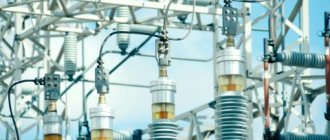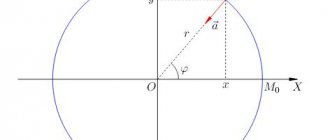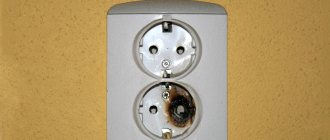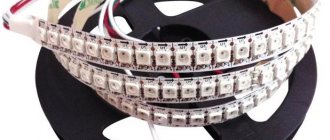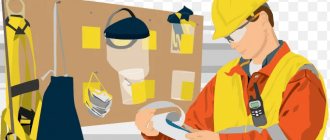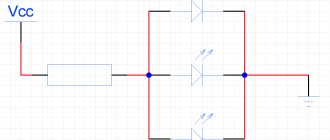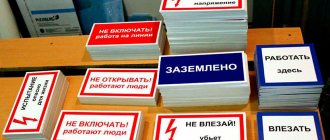Application and purpose of carbon dioxide fire extinguishers
Before using fire extinguishing agents, it is important to know their purpose. A carbon dioxide fire extinguisher is necessary when eliminating local fires:
- in the archives;
- in museums and galleries;
- on electrified vehicles (trams, trolleybuses, railway transport);
- when liquids that do not dissolve in water catch fire;
- when burning electrical installations with voltages over 1000 V.
Carbon dioxide fire extinguisher and evacuation plan
Air foam fire extinguishers.
Foam fire extinguishers are designed to extinguish fires and fires of solid substances and materials, flammable liquids and gases, as well as substances whose combustion is accompanied by smoldering (wood, paper, rags). It is prohibited to use air-foam fire extinguishers to extinguish live electrical installations and fires of alkali metals and substances that burn without air access.
Fire extinguishing agent.
Water with foaming agent solution, water with surfactants. The air-foam charge is designed to extinguish fires of liquid and solid flammable substances in industrial, residential and heated premises.
ORP fire extinguisher device.
The figure shows the structure of the fire extinguisher OVP-4. It consists of:
- Locking and starting device ZPU
- Pressure indicator
- Handles for carrying a fire extinguisher
- Siphon tube
- steel cylinder
- Hose with foam generator
Characteristics of OS fire extinguishers
State standard R 51057-2001 establishes general technical characteristics for each model of carbon dioxide fire extinguisher. Among them, there are several parameters that all carbon dioxide fire extinguishers have.
- The duration of release of fire extinguishing contents ranges from 7 to 10 seconds (for manual ones) and from 15 to 18 seconds (for mobile models).
- The length of the jet of fire extinguishing contents is a maximum of 3 m, which is not an advantage of these primary fire extinguishing agents. When extinguishing a fire, it is important that the person stays as far away as possible and has the opportunity, if there is a threat to health and life, to leave the premises without the use of additional means for evacuation (for example, a gas and smoke protection kit).
- The temperature at which the OS can perform its fire extinguishing function is in the range - 40 ... +50 degrees.
- The pressure of liquefied gas inside the cylinder does not exceed 15 MPa, which is 70 times higher than the pressure in car tires. For this reason, it is prohibited to subject the op-amp to any mechanical impact - throwing, shaking, hitting the cylinder, otherwise this may lead to an explosion of the op-amp housing. Charging of carbon dioxide fire extinguishers is carried out on a special device equipped with protective glass in case the weld of the cylinder breaks when filling it with liquefied gas.
- Operational features are that carbon dioxide fire extinguishers are designed to extinguish class B, C and E fires.
- Such primary means of fire control are ineffective when burning solids and materials, as well as metals, which can contribute to the spread and intensification of fire development. The situation is the same with electrical installations whose voltage is 10,000 W (10 kW), a fire extinguisher cannot cope with this.
The main difference between OU and other types of fire extinguishers is that their use does not entail damage to the fire object; the fire-extinguishing contents of the cylinder do not leave dust or stains on any surface.
The disadvantage of the fire extinguisher is that in enclosed spaces with a small area, using a fire extinguisher is dangerous to life, because an increased concentration of carbon dioxide in the air causes poisoning, which entails irritation of the mucous membranes of the respiratory tract with further inhibition of the functioning of the respiratory system. It is recommended that when extinguishing a fire in an enclosed space with the help of a fire control device, limit the number of personnel participating in this event, as well as provide the possibility of quick evacuation if signs of poisoning appear.
Operation of a carbon dioxide fire extinguisher
Characteristics and Application
A carbon dioxide fire extinguisher is one of the types of primary fire extinguishing agents. Its cylinder is filled with a composition of carbon dioxide, which is under high pressure of gas pumped inside. The use of carbon dioxide fire extinguishers is widespread in industry and everyday life.
It is especially effective to extinguish fires at the initial stage and those types of fires where the use of water is unacceptable.
Carbon dioxide fire extinguishers are designed to quickly cool the surface and disperse the gas. Thanks to this action of carbon dioxide, material values are practically not destroyed, and there are no streaks or stains left on them.
| You can put out fires: | You cannot put out fires: |
|
|
The fire stops due to cooling of the combustion area. In this case, a non-flammable substance is added to the composition of the flammable gas environment. There is a general cooling of the gas mixture and, as a result, combustion ceases.
Classification of carbon dioxide fire extinguishers
Based on the volume of fire extinguishing contents, the OS is divided into:
- hand-held, which can be easily held and carried when extinguishing a fire (maximum volume 7 l);
- mobile, which come complete with a trolley, which allows you to quickly transport them to any point in the room (maximum volume 80 l).
Types and characteristics of carbon dioxide fire extinguishers
The carbon dioxide fire extinguisher OU-1 is intended for use in small rooms where there is a risk of electrical wiring shorting. In most cases, such a model with a small charge volume is purchased for summer cottages, private baths, and apartments. The carbon dioxide fire extinguisher OU-1 does not damage property, which means it will not damage the family library, expensive household appliances and lamps. Also, such an assistant will be effective in the kitchen when oil burns in a frying pan. It can be placed both inside the house and in the garage, the main thing is accessibility and proximity to potential fire sources.
Carbon dioxide fire extinguishers of different series
OU-2 is a carbon dioxide fire extinguisher with a volume of extinguishing agent of 2 liters. It has the same properties and characteristics as other models of carbon dioxide fire extinguishers. The volume of carbon dioxide in the cylinder allows you to eliminate the combustion of not only objects with a small area, but also entire electrical installations. Most often, OU-2 cylinders are placed in electrical switchboards and server rooms. This carbon dioxide fire extinguisher is suitable for a car. When placing a fire extinguisher in the car, you should ensure that the cylinder is securely fastened in such a way as to prevent impacts, damage to the body (cuts, punctures, squeezing), as well as sudden changes in temperature.
The OU-5 carbon dioxide fire extinguisher is used not only to fight fires, but also to fight developing fires. This fire extinguisher found its calling among enterprises that use a lot of expensive equipment in the production process. So, for example, when one machine catches fire and is extinguished using OU-5, the loss of a production unit of equipment can be avoided by making only minor repairs to replace damaged elements. You can also find such a fire extinguishing agent in libraries, art institutions, and grocery stores.
Mobile fire extinguishers OU-50
Carbon dioxide fire extinguisher OU-7 is our calling in extinguishing fires in electric vehicles. The volume of the charge allows not only to reduce the burning area, but also to completely prevent a fire on current-carrying elements. Thanks to the pistol-type ZPU, fire-extinguishing contents can be supplied to the combustion zone in portions, for example, when a fire occurred in two areas simultaneously. The carbon dioxide fire extinguisher OU-7 is used at technological substations and electrical installations with voltages up to 10,000 W.
Fire extinguisher design
The design of a carbon dioxide fire extinguisher is similar to powder and most other types of devices and consists of the following main elements:
- Steel cylinder with fire extinguishing agent. The number after the letter indicates the weight of the carbon dioxide charge in kilograms. For example, OU5 means a carbon dioxide fire extinguisher with 5 kg. carbon dioxide.
- Locking device.
- Siphon tube and socket.
- Check to prevent accidental opening.
- A handle for transporting portable devices or a cart for mobile ones.
After opening the locking mechanism, the substance is fed through a siphon tube into the socket and released under pressure from 5.7 to 15 MPa (depending on the model). The pressure is built up during injection and corresponds to an ambient temperature of 20°C. When released, the liquid expands and turns into gas, taking heat from the environment and stopping the access of oxygen to the fire site. Additionally, non-flammable gas reduces the concentration of flammable volatile substances, and a jet supplied under pressure can effectively put out the flame.
How does a fire extinguisher work?
Video - the principle of operation of a carbon dioxide fire extinguisher
The principle of operation of a carbon dioxide fire extinguisher is based on chemical reactions occurring with liquefied carbon dioxide. Low-temperature contents are pumped inside the cylinder, then a shut-off and trigger device is screwed on top, which activates the fire extinguisher. Due to excess pressure inside the fire extinguisher body, gas is released outside. The first chemical reaction occurs in the siphon tube of the shut-off device, in which the gas at high speed passes from a liquefied state to a solid state (in the form of snow). At the same time, the volume of carbon dioxide increases almost 500 times! The temperature of the fire extinguishing agent during the first chemical reaction is reduced to -72 degrees (because of this, the process of crystallization or transformation into snow occurs). It is prohibited to touch the plastic bell during the extinguishing process to avoid frostbite on your hands.
Operating principle of a carbon dioxide fire extinguisher
When exposed to a flame, the temperature of which can reach 300–400 degrees, carbon dioxide cools the combustion zone, displacing all oxygen from it. Then a second chemical reaction occurs, in which carbon dioxide returns to a gaseous state and evaporates (subject to access to air from outside the room). This property of carbon dioxide to quickly change its state of aggregation makes it possible to visually control the process of eliminating the flame without resorting to means of protection from dust and air pollution.
Instructions for using a carbon dioxide fire extinguisher, as well as information about the volume of extinguishing agent, are located on a special sticker on the body.
Manual op-amps can be started and maintained by one person. To make it operational, you need to remove the fire extinguisher from the wall or from the fire cabinet, break the plastic seal, and then remove the pin. Approach the fire no closer than 1 m and no further than 2 m (the farther the carbon dioxide fire extinguisher is from the fire, the less effective it is).
How to use a carbon dioxide fire extinguisher
Pros and cons of op amps
The main advantage of a carbon dioxide fire extinguisher is that it does not damage the environment, books, paintings, papers, precision equipment, or circuit boards. After using the CO, no cleaning is required, since carbon dioxide simply evaporates when the room is ventilated.
Another advantage is that carbon dioxide can be used to extinguish electrical equipment: it does not cause short circuits and fights type B, C, E fires much more effectively than a powder fire extinguisher.
The main disadvantage is that the fire extinguishing agent has a negative effect on human health. Carbon dioxide can cause fainting and, if inhaled in large quantities, even death.
At the same time, there is a risk of burns for people, since the temperature of carbon dioxide during operation of the OS is –70 °C.
Another negative point is the undesirable effect of OTV on heat-sensitive objects.
And finally, an acid fire extinguisher costs almost 2 times more than its powder counterpart.
Which fire extinguishers are suitable for different classes of fires
10.07.2019
Everyone knows that there must be a fire extinguisher at the workplace, but not everyone knows how to use it. The same fire extinguisher will not be effective against all types of fire. There are many different types of fire extinguishers for different classes of fires and causes of fire.
Fire risk (a measure of the possibility of the fire danger of an object being realized) will help determine which fire extinguisher you need. You should also make sure that you have a fire extinguisher of the correct size and weight, as well as the correct class.
Fire extinguishers meeting BS EN3 requirements must have a red body (RAL 3000) and a special color tag covering 5-10% of the surface, which gives an understanding of the contents of the device and its class.
There are only 5 main types of fire extinguishers. However, there are several types of water and powder classes, which means that there are a total of 8 types:
- Water
- Fog
- Aerosol
- Foamy
- Powder - standard
- Powder – special
- Carbon dioxide (CO2)
- Chemical
There is no universal class of fire extinguisher that will work on all classes of fires.
Fire classification
There are six classes of fire: class “A”, “B”, “C”, “D”, “electrical” and class “F”.
- “A” – Combustible materials are a source of fire.
- “B” – Flammable liquids are a source of fire.
- “C” – Combustible gases are a source of fire.
- “D” – Combustible metals are a source of fire.
- “F” – Edible oils and fats are a source of fire.
Regardless of the type of fire, the same four elements will always be present:
- Fuel
- Warm
- Oxygen
- Chain reaction
There is a thesis that fire can be extinguished by removing one or more of these four elements.
Each class of fire has a different fuel, heat source, and chain reaction, so different types of fire extinguishers must be used depending on the class. For example, while a Class A fire can be safely extinguished with water, a Class C fire cannot because the water will conduct electricity and pose a risk to the life of the person fighting the fire.
Mermen
This is the most common fire extinguisher for class A fires. The most popular classes for indoors are water or foam.
- Tag color: red
- Applicable to organic materials such as: paper, cardboard, fabric, textiles, wood and coal.
- Does not apply to: electrical and kitchen fires and flammable gases and liquids.
How they work
When the jet is directed at the fire, the water, having a strong cooling effect, lowers the overall temperature of the source at which the fire can burn at all, thereby extinguishing the fire. In fact, most rooms use water or foam models.
Aerosol fire extinguishers – how are they different?
Unlike conventional water class, they are equipped with a special spray nozzle, which allows them to cover the burning area with greater speed and, therefore, extinguish the fire faster.
Fog fire extinguishers - what's the difference?
This class is again equipped with a special nozzle that sprays water in the form of very fine particles that “smother” the fire and create a water wall like fog between the person and the fire to suppress the high temperature heat.
Foam
This class of devices is manufactured to extinguish fires due to the ignition of flammable liquids, and they can also be used in some cases for class “A” fires.
- Tag color: cream
- Applicable to organic materials (paper, fabric, textiles, wood). And also to fire from paint and gasoline.
- Does not apply to Class “F” fires, electrical fires and flammable metals.
How they work
The foam from a foam fire extinguisher has the same cooling effect as water, so they work the same way, lowering the temperature of the fire source, causing the fire to burn progressively slower. Also in the case of burning liquids, the foam acts as a barrier between the flame and the source of fire (liquid).
Powder
They are also called "ABC" fire extinguishers because they are designed to fight Class A, B and C fires, however they are not recommended for use in confined spaces. Due to the fact that the powder can be easily inhaled and powder residues are very difficult to clean off, they are practically not used indoors.
This class can also sometimes be used in cases of electrical fire. Special dry powder fire extinguishers are used for flammable metals.
- Tag color: blue
- Applicable to organic materials such as fabric, paper, coal and wood. And also to fire from gasoline and paint. Highly flammable gases: liquefied petroleum gas and acetylene. Fires involving electrical appliances. Special powder fire extinguishers are used only for flammable metals: titanium and magnesium.
- Does not apply to fires caused by cooking oils, fires involving electrical appliances and fires in premises.
How they work
Dry powder fire extinguishers spray a specific composition of powder that absorbs oxygen and creates a wall between the fire source and the oxygen source.
Special powder fire extinguishers - how are they different?
Special dry powder fire extinguishers work in the same way as standard dry powder fire extinguishers, but are only intended for use on flammable metals. There are 2 types of dedicated dry powder fire extinguishers - "L2" which only handles lithium fires, and "M28" for all other metal fires.
Carbon dioxide
This class is designed to prevent electrical fires and is often installed in server rooms with a lot of electrical equipment. They can also extinguish fires from flammable liquids (class “B”).
- Tag color: black
- Applicable to flammable liquids: paint and gasoline. Electrical fires.
- Do not apply to kitchen fires, flammable metals and combustible materials: paper, wood or textiles.
How they work
Carbon dioxide fire extinguishers spray carbon dioxide, which absorbs oxygen molecules, leaving the fire without a power source. All work vehicles must be equipped with a CO2 fire extinguisher up to 2 kg.
Chemical
This class of fire extinguishers is manufactured to extinguish Class F fires, including fires involving edible oils and fats. They can also be used on Class A fires, but it is better to have a more suitable water extinguisher for this purpose.
- Tag color: yellow
- Applicable to edible oils and fats and organic materials: paper, fabric and wood.
- Does not apply to flammable liquids, metals and combustible gases, or electrical fires.
How they work
Chemical fire extinguishers create a layer of foam on the surface of burning oil or grease, preventing further ignition and oxygenating the fire. The foam also has a cooling effect.
Location of fire extinguishers
Each part of the room is unique and has its own cause of fire. It is important to cover each type of risk, install the correct fire extinguishers and ensure that people working or living in the building know how to use them.
Reception
Reception areas, lobbies and entrances are often one of the busiest areas of a building and usually have a very high risk of fire.
Corridors
Hallways and staircases are the central access point of many buildings, providing essential escape routes in emergency situations.
Fire extinguishers
Source: https://www.pogkomplekt.ru/ognetushitel.htm
| Fire equipment / Fire extinguishers The Pozhkomplekt company offers a full range of fire extinguishers used to extinguish fire: Fire extinguishers These are devices that make it possible to fight various types of fires; they belong to the primary fire extinguishing means. The function of fire extinguishers is to extinguish the initial fire, preventing its spread. With a correctly selected fire extinguisher, based on the type of combustible material, its use will completely neutralize the source of the fire from the first seconds of fire. Fire extinguishers - These are manual fire extinguishing equipment. They belong to a group of fire extinguishing agents called primary. In terms of design, they can be either manual, for extinguishing small fires and with the ability to carry them over short distances, or mobile, on a special trolley frame, when they can be brought to the source of fire a short distance. Since the extinguishing agent in fire extinguishers is under high pressure, they are made in the shape of a cylinder, since this is optimal for containing pressure. |
Op-amp properties
Which fires can be extinguished with a carbon dioxide fire extinguisher and which cannot is argued by its physicochemical properties. It is worth noting that the extinguishing mixture consists of liquid carbon dioxide and gaseous CO2. Here are a few reasons why op-amp is the most effective option in some cases, and why it cannot be used in others:
- When leaving the container, the liquid can increase in volume up to 500 times and at the same time it cools sharply. As for the temperature of the gas, CO2 cools down to -70 degrees Celsius.
- This property is excellent for extinguishing fires for several reasons. Firstly, carbon dioxide itself is not capable of supporting combustion. Secondly, too low a temperature effectively affects the source of fire itself, sharply reducing the strength of the flame, and then eliminating it altogether. The listed properties are not possessed by any analogue of a fire extinguisher. The only properties similar to portable carbon dioxide fire extinguishers are tanks with freon.
- However, too low a temperature also has its disadvantages. Such a low temperature of the exhaust gas will lead to the fact that touching the fire extinguisher socket will be accompanied by instant frostbite. The same can happen to your hands if you do not use protective gloves.
- The same reason explains the strict ban on extinguishing burning clothing on the human body. Since this will only worsen the consequences of a fire and can be fatal.
Fire extinguisher operation and safety precautions
- Operation of fire extinguishers without the receipt and seal of the manufacturer or the organization that carried out the recharging is not allowed.
- Fire extinguishers should be placed in easily accessible and visible places where they are not exposed to direct sunlight and are not directly exposed to heating devices.
- Operating and storage temperature from minus 40 to plus 50°C.
- When extinguishing electrical installations that are under voltage, it is not allowed to bring the socket closer than 1 m to the electrical installation and the flame.
- After using a fire extinguisher indoors, the room must be ventilated.
- Care must be taken when releasing the charge from the socket, since the temperature on its surface drops to minus 60-70°C.
- Recharging and repair of fire extinguishers must be carried out in specialized organizations at charging stations.
- The fire extinguisher cylinder must undergo re-examination 5 years after the fire extinguisher is manufactured.
- The mass of the fire extinguisher charge must be checked at least once every two years. The mass of the cylinder with the shut-off and start-up head is stamped on the body of the shut-off device. The total mass of the fire extinguisher is determined by adding to it the mass of CO2 indicated on the label or in the passport.
Main types of op amps
Today there are two main types of op amps - portable or hand-held, mobile. Portable ones include cylinders with liquid carbon dioxide, the weight of which ranges from 1 to 10 kg. They have the corresponding markings OU-1, OU-2, OU-3, etc. up to OU-10.
Mobile or transportable units include OU-25 and OU-80, with a weight of 25 and 80 kg, respectively.
As for the provision of industrial and public buildings with these devices, they are carried out in accordance with the “Fire Safety Rules in the Russian Federation”. It is worth noting that this does not include gas stations.
